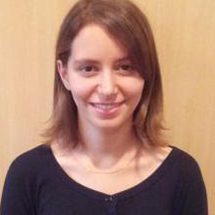
If you’re taking a Geometry class, chances are that you’ve spent the last couple of months learning about proofs (and if you haven’t gotten there yet, you will soon). Proofs are something students either love or hate, but mostly they love to hate them. Why, they often ask me, are we learning how to do this? How is this relevant to anything?
I’m here to tell you that Geometry proofs are one of the best lessons you’ll ever have—about writing. Many of my advanced math tutoring students in New York think that these two subjects are totally separate, that they are either a math or an English person and never the twain shall meet, but the truth is that there is a lot of overlap. The proof is in, well, the Proof.
What Geometry Proofs Can Teach About Writing an Essay Outline
Geometry proofs teach students to identify a clear goal, explain their reasoning step by step, and support each claim with concrete evidence. If you’re keeping score at home, those are also the three most important lessons English teachers try to impart in basic essay writing. For students who need essay writing help, or for those who feel that they are cursed forever to be math and science students who “just can’t write,” relating essay organization to the methodology they’ve already spent months learning can be instrumental in overcoming fears and anxieties about writing.
Similarity #1: Thesis Statements and Essay Introductions
The first parallel between geometry proofs and essay outlines is the thesis statement and the introduction. Many students struggle to tell the difference between an argument and a summary. A good argument doesn’t just summarize the plot of a book, or say that it’s important—it makes a point. Once you have identified your argument, you have to figure out how to put it into your introduction. A good intro starts at the beginning, giving your reader relevant background information and any key terms he or she needs to know, and ends with a thesis, which tells your reader what you’re going to prove by the end of the essay. In other words, a good introduction is a roadmap of the essay itself.
While this may feel muddled when writing the first draft of an essay, it’s obvious in a geometry proof. Geometry proofs begin with two pieces of information: what you’re given, and what you’re going to prove. You start at the beginning with what everyone knows, and then you state what you’re going to prove, so your reader knows where you’re going. The destination couldn’t be spelled out any more clearly.
Similarity #2: Geometry Evidence and Essay Evidence
When you’re writing a geometry proof, once you know what you’re trying to prove, you have to plan how you’re going to prove it. Before you write anything down, you have to think about the pieces you need, and how you get them. What do you need to know in order to get where you’re going?
You should go through the same process in creating an outline for essay. For each piece of reasoning you use, for every claim that you make along the way, you have to ask yourself: how do I know this? Where did it come from? You have to cite specific evidence, just as you have to cite specific features and properties in a geometry proof.
Putting all these pieces together is much easier in a geometry proof than an essay, but you should follow the same steps. Which idea leads to the next? How are they connected? Most important, you should be able to see how each paragraph and each new piece of evidence supports your main argument.
Use Proofs to Help You Write Reverse Outlines
The geometry proof model is also incredibly useful in making reverse outlines. A reverse outline is what it sounds like: instead of starting with an outline and then writing, you start with a draft and try to create a very simple outline for the existing text, so you can see its underlying structure. If you have a draft that needs reworking, making a reverse outline will help you cut through the text and to see the scaffolding underneath—and identify what it is broken and needs to be fixed.
Once you have your outline, you can compare it to the geometry proof model. Is your thesis statement clearly identified in the beginning? Does each of your steps connect logically to each other and to the main point? Do you explain how you know what you know with concrete evidence? If the answer is no to any of these questions, you can rearrange your outline to look more like a geometry proof before reworking the draft itself.
Need More Resources?
You’ll find more and more connections between math, writing, and philosophy as your math gets more advanced. (Example: Did you know that there are different types of infinity?) For more relevant reading, check out these other blog posts, written by our math tutors at MIT: 3 Anecdotes from Great Mathematicians’ Lives, Words, Drawings, and Math Problems, and 3 Tips to Help You Make the Leap to Math Hyperspace. If you’d like more one-on-one help, Cambridge Coaching offers writing tutoring and advanced math tutoring in Boston, New York, and everywhere in between! To talk to an expert tutor today, contact us at info@cambridgecoaching or 617.714.5956, and see what we can do for you!


Comments